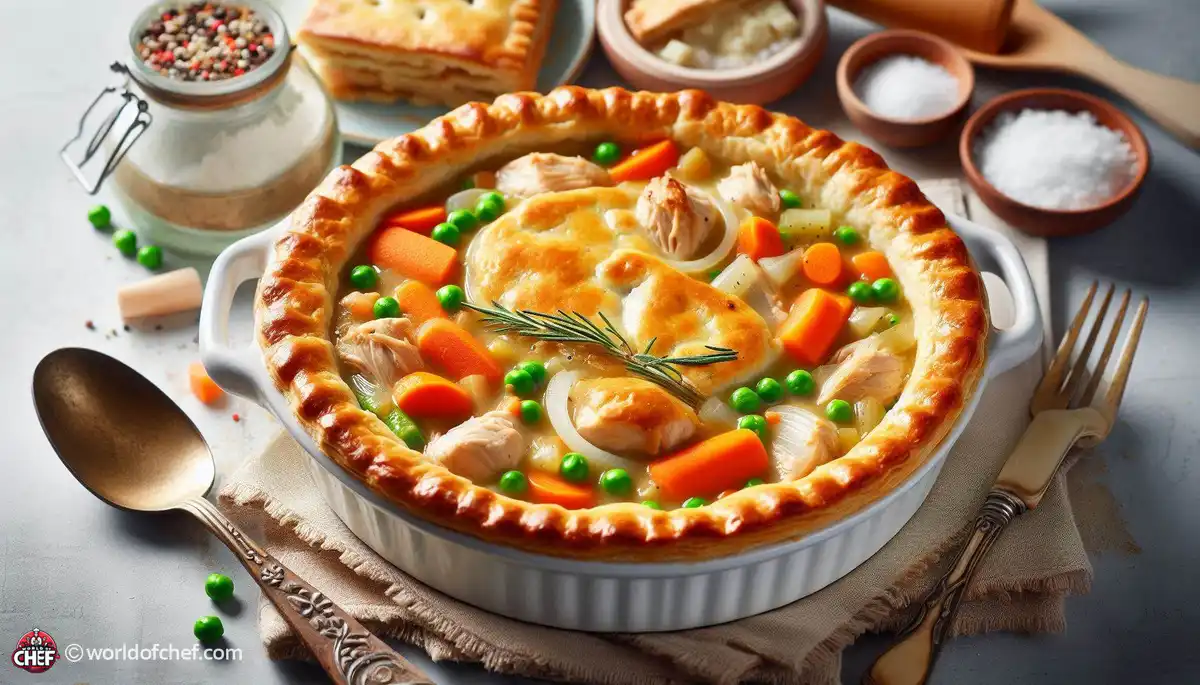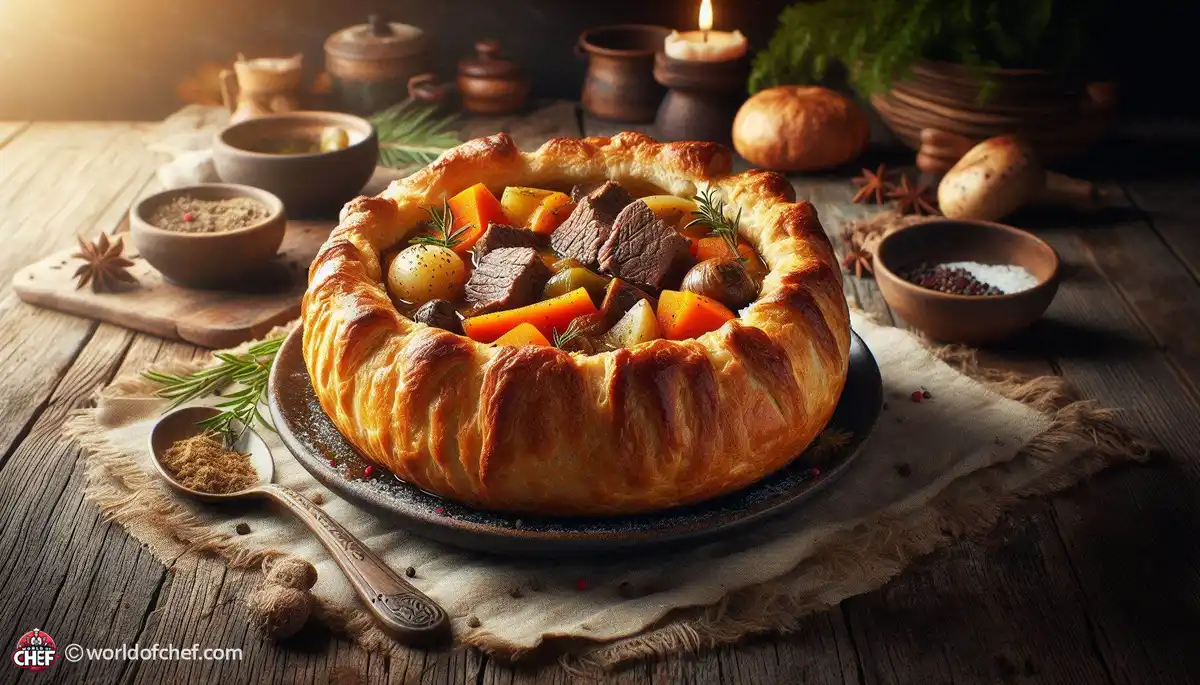
Easy Slow Cooker Chili Recipes for Busy Weeknights
Alexander Kuhns - Oct 16, 2024 - 15 min read


To some, making a homemade crust for chicken pot pie puts an old comfort food comfort staple into a new comfort place. The crust will just be a vessel on your plate, but how beautiful, because it's always made to complement the rest of the savory filling- giving it texture, and sometimes flavor, that sense of flakiness; everything is just so worth recalling. Mastering homemade art in making a truly flaky crust is what may turn an ordinary meal into a culinary masterpiece.
Ingredients comprise the crust. The three main ingredients for any recipe are flour, fat, liquid, and seasoning. The better the quality of the ingredients used, the better the result. Basic all-purpose flour serves as the foundation, while adding fat, either in butter or shortening or using both, contributes to producing a flaky crust. Binder is the cold water; a pinch of salt does add a certain depth. It is in knowing each ingredient's role that the magic of perfectly textured and flavored food can be achieved.
The hallmark of a successful crust is flakiness. To achieve ideal flaky texture, understanding of science behind it is key. When cold fat in incorporated into flour, this is what happens during the baking process: layers of creation. As the fat melts, it forms steam, and this is what lifts the dough up. It ends up with a light texture. This crust will come out very hard if it is overworked. You'll be able to make that tender but flaky crust if you get the process of incorporating fat into the flour right.
Keep all the ingredients cold. If the fat melts too quickly, it loses its flakiness. Avoid over-working the dough; it makes the crust tough. Chill before rolling. This allows the dough time to relax and stiffen up in the fridge. This makes rolling much easier. Use a light touch: As you roll out the dough, be gentle to not compress the layers. 2. Mastering the Art of Dough Preparation
Preparing the dough for your chicken pot pie crust is a delicate process that requires precision and attention to detail. Begin by combining the flour and salt in a large mixing bowl, whisking them together to ensure even distribution. Mix the cold fat with a pastry cutter or your fingertips to a mixture resembling coarse crumbs. This requires a fast process to make sure that the fat does not melt.
Now it is time to add the cold water. Slowly pour the water into the flour mixture as you continue stirring with a fork until it starts to just come together. Be aware not to add too much water since this will get the dough too wet for you to handle. A good addition of water aims at bonding the ingredients such that you achieve a cohesive dough. When the dough comes together as one unit, knead gently by hand a couple of times until it develops a shape like a ball.
Roll out the chilled dough: place the dough in plastic wrap, form a disk shape, then seal tight. Put it in the fridge for at least 30 minutes, or up to overnight. The chilling of the dough relaxes the gluten and solidifies the fat, which allows you to roll out the dough without shrinking or tearing. This is how you get a tender flaky crust.
Then, when you get ready to roll it out, pull the dough out of the refrigerator, set it on your countertop at room temperature for a few minutes to get more pliable, then lightly dust the top of your work surface with some flour, dust your rolling pin with some more flour, and set the dough upon that floured surface. Then, lightly start to roll the dough out - depending on what form this dough takes will be its circle or rectangle shape so as to fit up into your baking dish or the size you want. To make your chicken pot pie assemble the dough to approximately 1/8 inch to 1/4 inch. Beware of over-rolling so it becomes too thin in places to handle the crust.
Preparing a chicken pot pie begins by preparing your filling: making sure to cook all the chicken until well done to soften, tear or shred all of this into portions good for bite. Sauté the onion, carrots, celery and any other vegetable you're using in another pan. Add the chicken to that pan along with some of the broth and seasonings and any add-ins. The filling cooks until it has reached the desired consistency: just before it thickens enough so that it isn't pouring out of a spoon and it's hot enough you can smell what you added. Take off the stove and let it cool ever so slightly as you set up your pie.
Now is the time to assemble the pie once the filling has cooled down a little. Pour the filling into the prepared pie dish, spreading out a little with a spoon or spatula. Be careful not to fill it too much, or it is bound to bubble over in the oven. Leave a small space between the top of the dish and the filling for room in the crust. Let the filling be put in and cover it with rolled dough draped over the top, pressing the edges to the edges of the pan. Use a sharp knife to trim excess dough, then crimp with your fingers or a fork to seal.
The crust will stay soggy if it does not allow for the proper venting through baking. Use a sharp knife to make several small slits or cut out decorative shapes in the center of the crust. This aids in allowing steam to exit the filling, so that it is not producing more moisture than the crust has the capacity to absorb which may make the crust soggy. Be creative how you vent your pie in simple slits, in a lattice pattern, and other decorative cutouts as you will give your pie visual appeal.
Use egg wash to give a nice golden sheen before baking, and seal the edges for a crisp finish. One can also flavor and texturize by sprinkling a pinch of salt or one's favorite herbs and spices on the crust. These finishing touches will not only make your pie look the best, but they also add that extra layer of flavor for sure to please your guests.
The secret to perfectly baked chicken pot pie is in achieving the temperature and baking time. So, preheat your oven according to your recipe to the recommended temperature, which usually ranges between 375 to 400°F or 190 to 200°C. The high temperature in baking pies might burn the crust as the filling is not up to the mark, so in that case, sometimes you need to bake it less hot, and if your crust is too low at a baking temperature, then, again, it will leave the crust soggy inside. You should bake so that the crust is turned into golden brown and you feel the bubbling motion coming from the filling for around 30 to 40 minutes in the oven.
Where you place your pie in the oven also makes a difference. To distribute heat evenly and cook it to perfection, place your pie on the center rack of your oven. Try to avoid placing it too close to the heating elements so that it does not start browning too quickly and burn. If you are baking several pies at once, turn the pies over halfway through their baking time. This ensures that all the pies get baked evenly from edge to center. It's surprising how this little step could make a difference in how your pie turns out in the end.
As your pie is baking, keep an eye on it through the window of the oven door or oven light. Do not open the oven door too many times because this may cause temperature changes, thus affecting the baking. Rely on visual clues for knowing when your pie is done. The crust is golden brown and crispy with flaky edges while the filling is bubbly and cooked through. You may also use a digital thermometer to measure the temperature inside the filling. The thermometer should indicate at least 165°F (74°C) for your chicken to be safe to consume.
Once you have achieved a perfectly baked chicken pot pie, you shouldn't slice into it immediately. Instead, allow the pie to rest for at least 10 to 15 minutes before you serve. It dries slightly, which makes it easier to slice and prevents the filling from oozing out when you cut into it. Served too soon, this pie may present poorly and hot filling that has not had a chance to settle. Allowing it to rest ensures neat slices are plated and full of flavor. Serve your chicken pot pie with your favorite sides, be it mashed potatoes, steamed vegetables, or a crisp green salad, for a comforting and satisfying meal that's sure to impress.

Alexander Kuhns - Oct 16, 2024 - 15 min read

Emery Donley - Oct 16, 2024 - 6 min read

Brad Damian - Oct 16, 2024 - 11 min read

Craig Ackley - Oct 15, 2024 - 6 min read